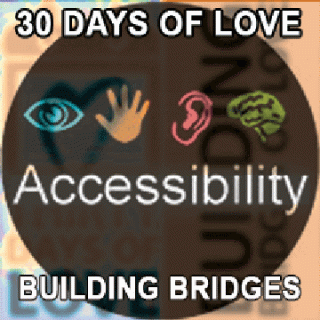Embrace Everyone

DAY 20: Radical Inclusion
Today, 30 Days of Love invites us to consider the ways we engage all people, regardless of physical, cognitive, sensory, or psychological ability.
I've found myself thinking about this quite a bit recently, as one of the courses I'm taking opens each class with an icebreaker of some sort. Our first day involved a number of icebreakers that required movement around a rather cramped classroom and one of my classmates has a motorized wheelchair. We "made do" but it was clearly not an inclusive environment. In subsequent classes, our icebreakers have been more verbal or take place sitting down in smaller groups with little moving around the room, now that the instructor is aware.
But we don't always know who is showing up to any given event, gathering, CON or service. When I'm working with youth leaders on something like General Assembly, for example, I always encourage them to make plans that are widely inclusive or that can be readily adapted. I start with the assumption that we will plan to be inclusive and welcoming to the wide range of abilities in our communities, and not just ready to 'figure something out' if presented with a challenge.
Icebreakers and games are often one of the places where this comes up. One resource I really appreciate is 101 Adapted Games for Kids by Stephanie Tilley. While many of the games are for younger children, many are similar to games I see played in youth groups. The book also has excellent advice for adapting any game with sensory, physical, visual, auditory, verbal and cognitive needs in mind. For example, have you considered that visual clues may be helping you when you play two truths and a lie? I know that I've tried to "read" a face to see if they'd give any hint. What about dividing people into groups by having them silently arrange themselves by birthday? How might you be able to support and include youth with cognitive differences who may have trouble understanding what others are trying to communicate with gestures? Did you know that there are ways to do a human knot with someone in a wheelchair that goes beyond having them 'coach' from outside the knot?
There are many resources for a whole host of different settings for making sure we're being inclusive of all abilities. Today, Standing on the Side of Love has linked to some. Check them out and consider how your youth group can do their part to welcoming all.